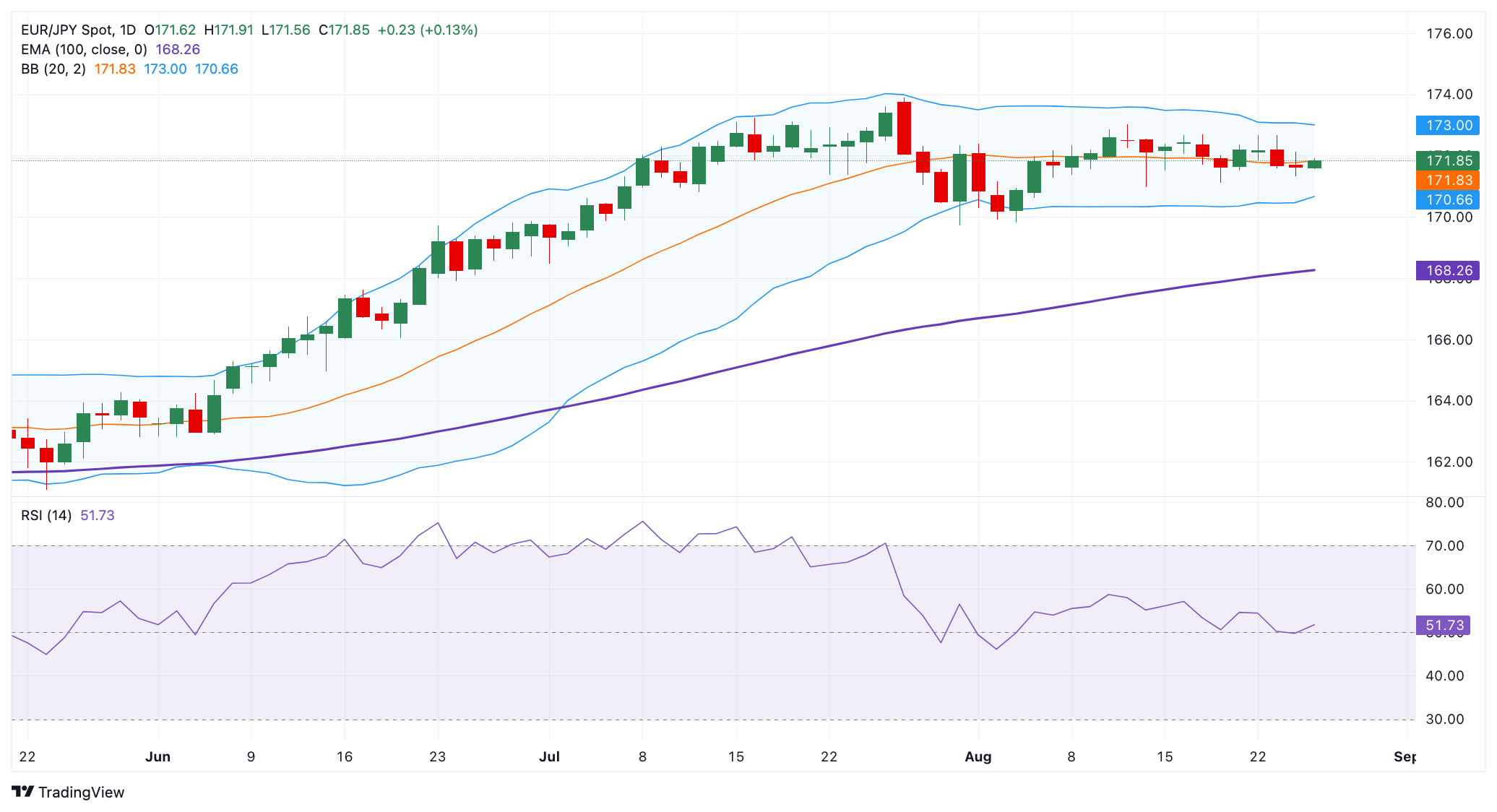EUR/JPY Price Forecast: Strengthens above 171.50, further consolidation cannot be ruled out
- EUR/JPY strengthens to around 171.85 in Wednesday’s early European session.
- Positive outlook of the cross prevails above the 100-day EMA, but further consolidation looks favorable with the neutral RSI indicator.
- The immediate resistance level is seen at 172.67; the initial support level is located at 171.12.
The EUR/JPY cross gains traction to near 171.85 during the early European session on Wednesday. The Japanese Yen (JPY) softens against the Euro (EUR) amid the improved risk sentiment, which undermines the safe-haven currency. Investors await a series of economic reports that could shape expectations for Bank of Japan (BoJ) policy. Japan’s Tokyo Consumer Price Index (CPI) for August is due later on Friday.
Technically, EUR/JPY keeps the bullish vibe on the daily chart, with the price holding above the key 100-day Exponential Moving Average (EMA). However, further consolidation or temporary sell-off cannot be ruled out as the 14-day Relative Strength Index (RSI) hovers around the midline. This suggests the neutral momentum in the near term.
The first upside target to watch for the cross is seen at 172.67, the high of August 25. Extended gains could see a rally to 173.00, representing the upper boundary of the Bollinger Band and round mark. Further north, the next hurdle is located at 173.90, the high of July 28.
On the other hand, the initial support level for the cross emerges at 171.12, the low of August 20. A breach of this level could expose 170.65, the lower limit of the Bollinger Band. The additional downside filter to watch is the 170.00 psychological level.
EUR/JPY Daily Chart

Japanese Yen FAQs
The Japanese Yen (JPY) is one of the world’s most traded currencies. Its value is broadly determined by the performance of the Japanese economy, but more specifically by the Bank of Japan’s policy, the differential between Japanese and US bond yields, or risk sentiment among traders, among other factors.
One of the Bank of Japan’s mandates is currency control, so its moves are key for the Yen. The BoJ has directly intervened in currency markets sometimes, generally to lower the value of the Yen, although it refrains from doing it often due to political concerns of its main trading partners. The BoJ ultra-loose monetary policy between 2013 and 2024 caused the Yen to depreciate against its main currency peers due to an increasing policy divergence between the Bank of Japan and other main central banks. More recently, the gradually unwinding of this ultra-loose policy has given some support to the Yen.
Over the last decade, the BoJ’s stance of sticking to ultra-loose monetary policy has led to a widening policy divergence with other central banks, particularly with the US Federal Reserve. This supported a widening of the differential between the 10-year US and Japanese bonds, which favored the US Dollar against the Japanese Yen. The BoJ decision in 2024 to gradually abandon the ultra-loose policy, coupled with interest-rate cuts in other major central banks, is narrowing this differential.
The Japanese Yen is often seen as a safe-haven investment. This means that in times of market stress, investors are more likely to put their money in the Japanese currency due to its supposed reliability and stability. Turbulent times are likely to strengthen the Yen’s value against other currencies seen as more risky to invest in.
